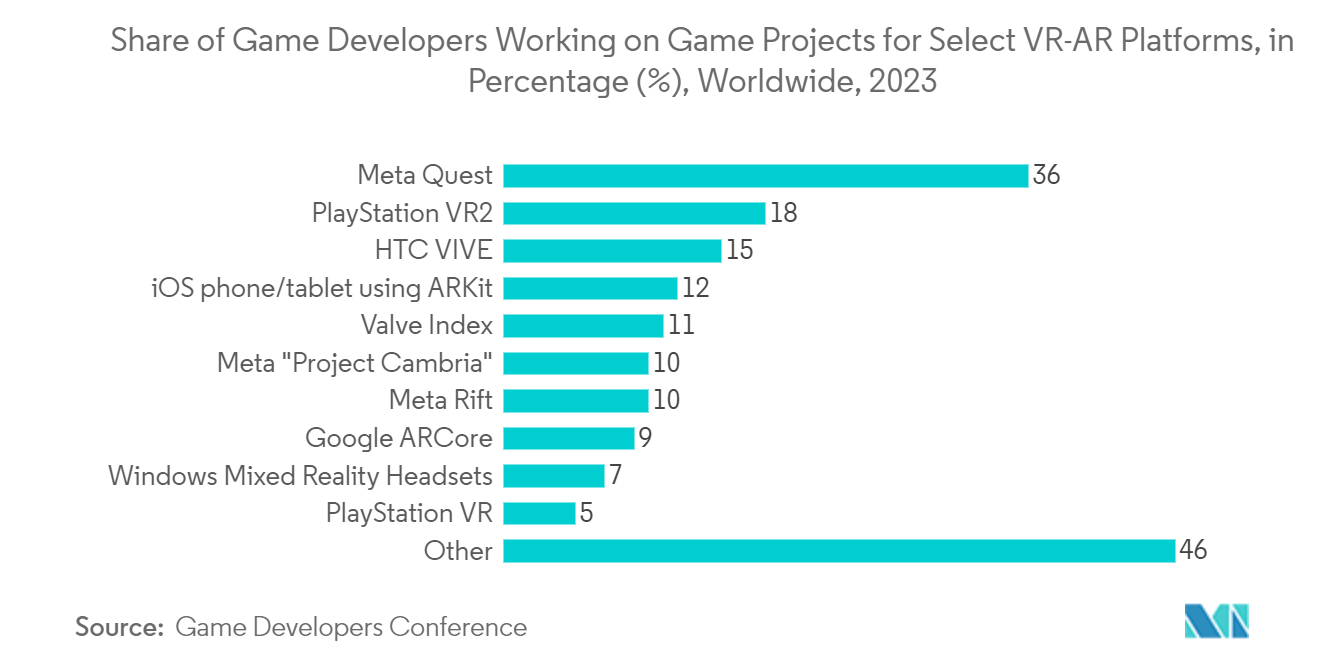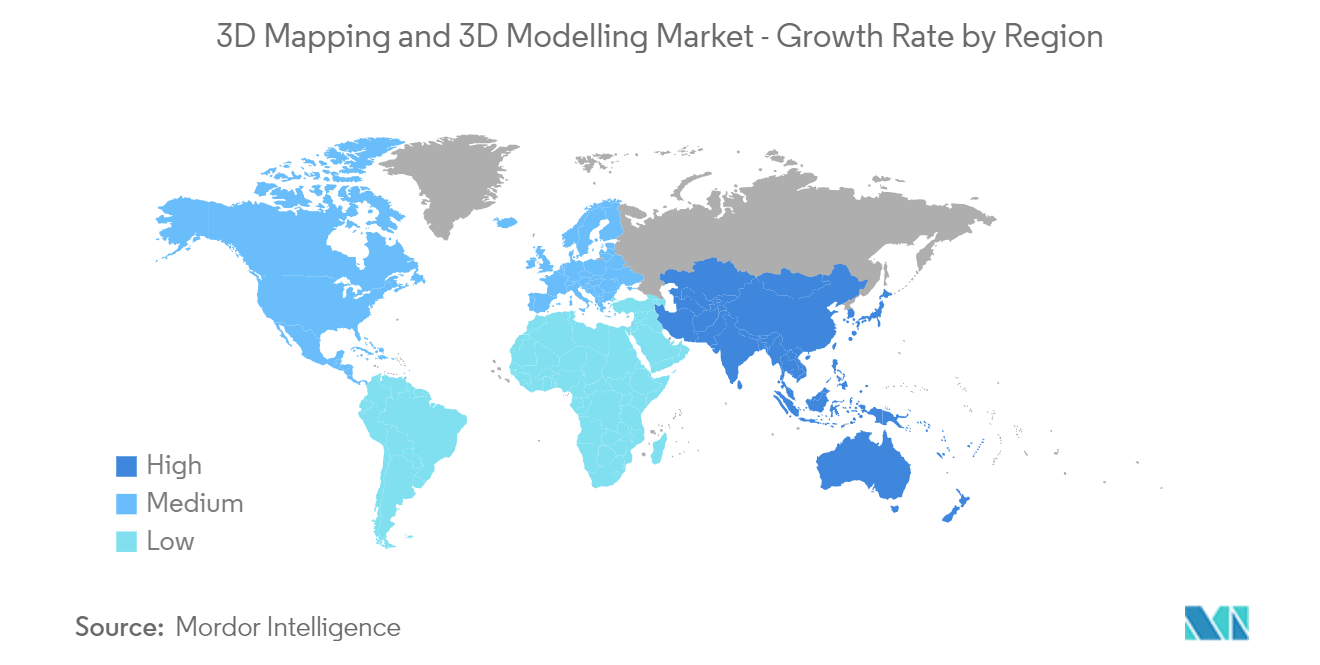Market Trends of 3D Mapping And 3D Modelling Industry
Entertainment and Media Segment would Contribute Significantly to the Market Growth
• Game-building companies, including Epic Games, Ubisoft, and Blizzard Entertainment, all use 3D modeling to create characters, environments, and objects that are then animated. For example, Blizzard Entertainment’s game “Overwatch” uses 3D modelling to make its cast of characters, each with their unique abilities and personalities.
• Applying 3D modelling technology in virtual reality experiences significantly creates immersive environments. Artists can use 3D modeling to create virtual worlds, characters, and objects that users can interact with in VR experiences. For example, the VR game “Beat Saber” uses 3D modeling to create neon-colored blocks that players slice with virtual lightsabers.
• The growing use of virtual reality in gaming propels global demand for the market. VR gaming consoles are becoming increasingly popular in major economies such as the United States, the United Kingdom, China, and Japan. Over the projected period, these technological advancements in VR gaming will boost the growth of the advanced 3D modelling industry worldwide in the future.
• The growth of animations in the entertainment industry fuels the demand for 3D mapping, enabling developers and gamers a more immersive experience. Techniques such as texture mapping create visually stunning environments, and projection mapping can increase interactive experiences, supporting the market's growth.
• Additionally, the growth of events and exhibitions for entertainment purposes after the post-pandemic period and the emergence of digital technology integration in event management are supporting the development of the market in the entertainment segment. For instance, in July 2023, London's leading event venue, ExCeL London, commissioned a new hyper-realistic digital twin to aid event organizers in making decisions about the location and flow of their event, working in partnership with OnePlan for using its 3D venue mapping, showing the demand for the market during the forecast period.

Asia-Pacific is Expected to Be the Fastest-growing Market
• Asia-Pacific is anticipated to have a substantial 3D mapping and modeling market share. Its expansion may be attributable to the rising demand for 3D imaging sensors, 3D modeling, and 3D visualization, rendering software tools in healthcare and life sciences, manufacturing, construction, and media and entertainment industries.
• The growing demand for a realistic representation of the product for marketing purposes by small and medium-sized companies and government agencies in the region would stimulate demand for 3D mapping and modeling products. Rising cloud and IoT adoption and increased web usage are some of the reasons driving the market.
• The media and entertainment business are one of the region's thriving industries, propelled by increased digitalization and internet usage over the last decade. The region's gaming industry's rise is likely to present potential opportunities during the forecast period.
• The application of 3D mapping in construction and urban planning is driving the demand for the market in the Asia Pacific region in line with the infrastructural development in the emerging economies in the area. For instance, in November 2023, the national mapping agency Survey of India (SoI) and Genesys International, a leading Indian mapping company, on Wednesday announced a strategic tie-up for a three-dimensional (3D) digital twin-mapping program in India to create digital twins of significant cities and towns in India, which would support the market growth.
• China, Australia, Singapore, India, and Japan are among the countries in the region with well-developed cyber ecosystems. The region is also launching various attempts to utilize IT infrastructure, allowing business users to adopt more advanced technology. The region is expected to expand rapidly due to economic considerations driving the development and maintenance of production facilities throughout Asia. The region's rise may also be ascribed to its expanding economy, where many firms are increasingly embracing 3D mapping and modeling to innovate their products.


